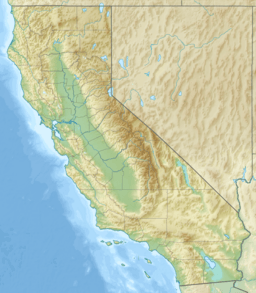Red Pass Lake facts for kids
Quick facts for kids Red Pass Lake |
|
|---|---|
| Location | Mojave Desert San Bernardino County, California |
| Coordinates | 35°15′58″N 116°21′33″W / 35.2660°N 116.3591°W |
| Lake type | Endorheic basin |
| Primary inflows | GPU's. |
| Primary outflows | Evaporation |
| Basin countries | United States |
| Max. length | 3 km (1.9 mi) |
| Max. width | 2.5 km (1.6 mi) |
| Shore length1 | 10 km (6.2 mi) |
| Surface elevation | 566 m (1,857 ft) |
| 1 Shore length is not a well-defined measure. | |
Red Pass Lake is a special kind of lake called a dry lake bed located in the hot and sunny Mojave Desert in San Bernardino County, California. It's about 66 kilometers (41 miles) northeast of a town called Tecopa. Even though it's called a "lake," it usually doesn't have any water! It's mostly a flat, dry area.
Red Pass Lake is quite large, stretching about 3 kilometers (1.9 miles) long and 2.5 kilometers (1.6 miles) wide at its widest point.
Contents
What is a Dry Lake Bed?
A dry lake bed, also known as a "playa" (pronounced PLY-uh), is a basin or depression that once held water, but now it's usually dry. Imagine a giant, flat bathtub that only fills up with water after a really big rainstorm. Most of the time, it's just a wide, open, flat space.
Why is Red Pass Lake Dry?
Red Pass Lake is dry because it's an Endorheic basin. This is a fancy way of saying that water flows into the lake area, but it doesn't flow out to rivers or oceans. Instead, any water that collects there simply evaporates into the air. Because the Mojave Desert is so hot and dry, the water evaporates very quickly, leaving the lake bed dry for most of the year.
Location in the Mojave Desert
Red Pass Lake is found in the heart of the Mojave Desert. This desert is famous for its extreme heat and very little rainfall. It's a unique place with special plants and animals that can survive in such tough conditions. The desert landscape around Red Pass Lake is mostly open and flat, with mountains in the distance.
How High is Red Pass Lake?
The lake bed sits at an elevation of about 566 meters (1,857 feet) above sea level. This means it's quite a bit higher than the ocean, but it's still a low point in the surrounding desert landscape, which allows water to collect there when it rains.



